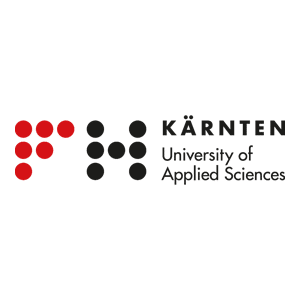Consortium
Key contributions
SAL is the coordinator of the project CoRaLi-DAR, four units from SAL will be strongly involved in the project.
The Integrated Photonics Technologies unit will be leading the work on the LiDAR photonic integrated circuit design and testing. It will focus on demonstrating that silicon photonics technology could be a viable and advantageous platform for detection and ranging application.
The Front-End Integrated Circuit unit will be working, together with FH Kärnten, in the development of dedicated electronic IC for the control of the Optical Phased Array (OPA) and signal detection. Key objective will be ensuring 50% power reduction respect to current state of the art.
The Millimeter Wave Technologies unit will strongly cooperate with Infineon in the development of new functionalities to be integrated into the RADAR system. Their effort will ensure a 50% reduction in sensor area with the introduction of a Tx/Rx duplexer.
The Heterogeneous Integration Technologies unit will lead the activities towards the final assembly of CoRaLi-DAR sensor. It will perform the necessary simulation to ensure thermal and electromagnetic compatibility between the RADAR and LiDAR sensor.


Key contributions
IHP will perform electro-photonic integrated circuit (EPIC) fabrication divided into two independent runs. The first run will test basic electronic photonic functionalities such as phase shifters and photodetectors with TIA. The second run then includes the final LiDAR chip with the integrated laser and the complete subsequent electronics and photonics. The EPIC designs in the project will be carried out by means of IHP’s PDK (Process Design Kit) and requirements of the fabrication process to be developed.
IHP will also develop the integration of laser diode sources in the proprietary EPIC platform SG25H5 in the backend. This will make it possible to have light sources integrated with a full set of photonic and electronic-based set of functionalities already developed on the platform.

Key contributions
The research group of Carinthia Institute of Microelectronics (CIME) at CUAS has profound experience in the design and implementation of integrated circuits for wireless/wireline communication as well as sensor frontend integrated circuits. This includes analog and digital integrated circuit design using state-of-the-art CMOS and Bipolar technologies, system-level modeling of integrated electronic systems as well as Lab evaluation of IC prototype test chips. In the CoRaLi-DAR project, the CUAS team will be responsible for the circuit design of LIDAR receiver frontend trans-impedance amplifiers as well as the integrated Laser control circuit for FMCW LIDAR application. The research work is performed in close collaboration with partners SAL and IHP.

Key Contributions
Infineon will lead the consortium in identifying specific applications and functionalities that the final CoRaLi-DAR demonstrator will target in automotive sensing.
Infineon will actively cooperate with SAL in the development of two key functionalities in the RADAR system to reduce sensor size and power, namely a Tx/Rx duplexer with high level of leakage cancellation, and frequency doubler for D-band applications.

IMEC-NL is an independent research center and together with TNO one of the pillars in the Holst Centre in Eindhoven, the Netherlands. IMEC-NL research bridges the gap between fundamental research at universities and technology development in industry, by being an “international center of excellence”. Recently, IMEC-NL built upon LiDAR photonics custom-made building blocks, such as optical phased arrays (OPA), for next generation on-chip LiDAR.

Interuniversitair Micro-Electronica Centrum
IMEC is a world-leading independent research center in nano-electronics and digital technologies. IMEC leverages its world-class infrastructure and local and global ecosystem of partners across a multitude of industries to create innovation in application domains such as healthcare, smart cities, mobility, manufacturing, sustainable energy, and education. IMEC is a front-runner in innovative technology, chip, platform, and system prototyping for advanced mmWave RADAR sensing and neuromorphic sensor fusion. IMEC activities target multiple application domains such as autonomous vehicles, factory of the future, smart living, and smart logistics.
Key Contributions
IMEC will the specific applications and functionalities that the final demonstrator will target in automotive sensing. Specific objectives cover the definition of algorithms and interfaces functionalities for both RADAR and LiDAR; develop the adaptive sensing algorithm for RADAR receiving feedback from the LiDAR sensor; Integrate both sensor control planes and derive combined adaptive sensing algorithm.
